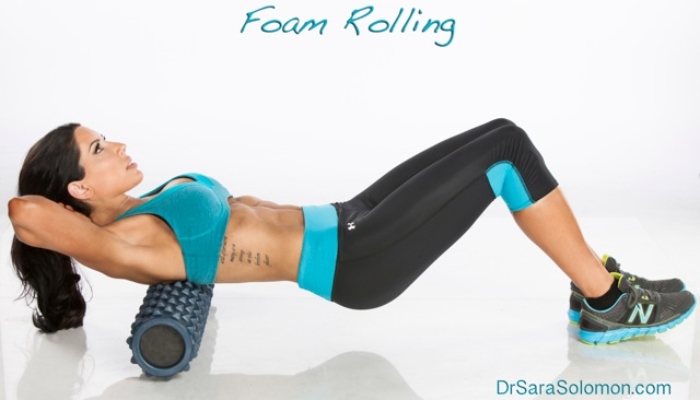
What are Trigger Points?
Injuries and repetitive motions can degrade your muscles and fascia. (The fascia is the connective tissue surrounding and supporting your muscles). This can cause localized areas of tenderness, called trigger points (or knots). Trigger points can restrict the range of motion of the muscle and can even refer pain to other locations (eg. headaches). If left untreated, they can lead to scar tissue formation, which is why it's important to treat trigger points!
You can eliminate trigger points in your muscles using a tube of foam! Foam rollers offer many of the same benefits as a sports massage, but without the hefty price tag.
Foam rolling applies pressure to the trigger points. When you pause the roller on a trigger point for a few seconds, it helps release the tension (myofascial release) in the muscle and the pain starts to abate.
By using your own body weight and a cylindrical foam roller you can:
- perform a self-massage (myofascial release)
- break down soft tissue adhesions and scar tissue, making your muscles more pliable
- break up trigger points
- minimize soreness and help your muscles feel relaxed
- increase blood flow and circulation to the soft tissues
I like to use foam rollers with "teeth". The teeth kneed your muscles and stretch your fascia, helping to erode trigger points. injury. Plus it feels good. They allow for more intense myofacscial work compared to foam rollers without teeth.
10 Minute Foam Rolling Routine
Foam rolling feels great, so that's a good reason to do it. Just don't do it immediately before your training session for the same reasons why you shouldn't stretch immediately before training ... because it can reduce your performance and increase your chances for injury.
I like to foam roll it for no more than 10 minutes when I get out of bed in the morning to "wake my body up". I also like to do it as part of my post-workout recovery process.
Foam Rolling Technique
- Position the area of your body you want to work on top of the foam roller.
- Your body weight creates the pressure that massages and releases tight spots in the fascia. You control the pressure by applying more or less body weight on the foam roller. Only apply as much pressure as you can tolerate.
- Roll the foam roller under each muscle group until a tender area (trigger point) is found. Maintain pressure on the tender area for 30–60 seconds. But be warned, it can feel excruciating. Roll over each area a few times until you feel it relax. Over time, foam rolling will become less painful, which means that your muscles are responding! It may take 2 to 3 weeks before foam rolling starts to feel good.
- Roll after training.
- Stay on soft tissue and avoid rolling directly over bone or joints.
Where to Buy Foam Rollers
- RumbleRoller 31", extra firm
- Gator
- Beastie (original + extra firm)

